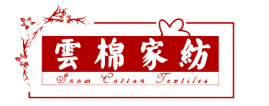Faced with the impact of the epidemic, “China, Japan, and South Korea’s textile industries must strengthen collaboration to jointly build a stable and safe industrial chain and supply chain system, and enhance the resilience of regional industrial development.” Gao Yong, secretary of the party committee and secretary-general of the China National Textile and Apparel Council A speech at the 10th Japan-China-Korea Textile Industry Cooperation Conference expressed the common aspirations of the industry.
At present, China’s textile industry has benefited from the improvement of the epidemic prevention and control situation, and the recovery development trend has continued to consolidate, while the Japanese and Korean textile industries have not yet recovered to the level before the epidemic. At the meeting, representatives from Japan Textile Industry Federation, Korea Textile Industry Federation and China Textile Industry Federation expressed that under the new situation, the industries of the three countries should further deepen mutual trust, deepen cooperation, and join hands to grow and develop together.
Under this special situation, the representatives of the three parties have also reached more consensus on the development of trade and investment cooperation in the industry.
In recent years, overseas investment in the Korean textile industry has shown a growth trend, but the growth rate of investment has slowed down. In terms of destinations, while the overseas investment of the Korean textile industry is mainly concentrated in Vietnam, investment in Indonesia has also increased; the investment field has also changed from investing only in clothing sewing and processing in the past to increasing investment in textiles (spinning). , Fabrics, dyeing). Kim Fuxing, director of the Korea Textile Industry Federation, proposed that RCEP will come into effect soon, and the three countries of Korea, China and Japan should make corresponding preparations to actively cooperate and enjoy its dividends to the greatest extent. The three parties should also close economic and trade cooperation to cope with the spread of trade protectionism.
In 2021, China’s textile industry’s import and export trade and foreign investment will resume a good growth momentum. At the same time, China is actively building a network of high-level free trade zones and promoting the joint construction of the “Belt and Road”, which has created good conditions for the textile industry to expand international cooperation and accelerate upgrading and development. Zhao Mingxia, vice president of the China Textile Federation Industrial Economic Research Institute, introduced that during the “14th Five-Year Plan” period, China’s textile industry will implement wider, broader, and deeper opening up to the outside world, continuously improve the level and level of international development, and adhere to high standards. Both quality “bringing in” and high-level “going out” are given equal importance to create a highly efficient and global resource allocation system.
Sustainable development has become an important direction of the textile industry. At the meeting, Ikuo Takeuchi, President of the Japan Chemical Fiber Association, said that in the face of new issues such as raising consumers’ awareness of sustainability, strengthening the supply chain, and ensuring a stable supply of medical textiles, the Japanese textile industry will actively promote sustainable development. Technological development, cross-industry cooperation, etc. open up new markets, use digital transformation to establish new business models, promote globalization and standardization, and strengthen the infrastructure of the Japanese textile industry. Kim Ki-joon, executive vice president of the Korea Textile Industry Federation, introduced that the South Korean side will advance the “Korea Version of the New Deal” investment strategy focusing on green, digital innovation, security, alliances and cooperation, promote the digital transformation of the textile and apparel industry, and realize the viability of the industry. Continuous development.
Post time: Dec-01-2021


